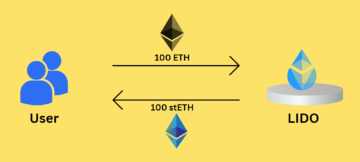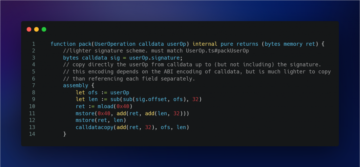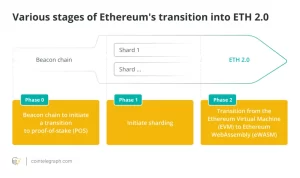The crypto world is flooded with acronyms and complex abbreviations, which seem to be scattered over Twitter and Live streams like bullets from a machine gun. However, one such acronym that has seemed to lose its value over time for good is ICO.
For a quick recap, ICOs exploded in popularity in 2017 as a way to issue tokens without the use of intermediaries such as banks or stock exchanges. The fundamental underlying mechanics of ICO, on the other hand, caused the bubble to burst, and the media was all over it.
Nonetheless, in 2019, cryptocurrency exchange platforms introduced the IEO (Initial Exchange Offering) concept, in which they acted as third-party launchpads to provide a safer environment. Although these exchanges’ safety net and convenience led to success, their centralized nature exposed many drawbacks.
On the other side, the booming DeFi sector has created an alternate method to provide any financial service feasible, including savings, loans, insurance, and even decentralized crowdfunding. Instead of relying on third parties or intermediaries, DeFi utilized smart contracts to fulfill the contract’s details automatically. As a result, they are impossible to deceive.
Leveraging such a DeFi mechanism, there are two alternatives to centralized predecessors – Initial Liquidity Offering (ILO) and Initial Decentralized Exchange Offering (IDO). Technologies that illuminate new paths should always be approached with caution; however, before diving into that topic, let’s first understand what ILO and IDO exactly are!
Initial Decentralized Exchange Offering (IDO)
Rather than issuing tokens on centralized fundraising or cryptocurrency exchange platforms, IDO is a fundraising method on decentralized platforms such as Uniswap and SushiSwap. Essentially, when a project or any asset, including a cryptocurrency or a music album, is launched through a decentralized liquidity exchange, it is called an IDO.
IDOs enable businesses to launch their token’s public debut and gain rapid access to capital, garnering retail investors’ interest. Raven Protocol was unintentionally the first project to establish the IDO in 2019, followed by Compound and UMA.
IDO works by establishing liquidity pools where traders can swap tokens, including USDT and ETH liquidity pairs. In contrast to traditional exchanges, the values of tokens are only adjusted when they are bought or sold and when the liquidity token ratio is changed. Traders have the option of switching between crypto-assets and stablecoins based on market conditions. Stablecoins, by their lack of volatility, provide traders with an opportunity to swap their extremely volatile crypto assets.
Furthermore, by avoiding pre-mines that favor founders over community members, IDO is seen as a fair source for launching a cryptocurrency project.
Benefits of IDO:
- Unlike other token offers managed by private investors, IDO fundraising attracts a large number of users since anyone can participate in the event without acquiring prior permission. Additionally, buyers and token projects will be able to maintain complete control of their funds at all times.
- IDO provides rapid liquidity, which boosts the token price and the investor’s ability to sell their token at a greater price later in the IDO. One notable example is the UMA fundraising, where the original token price went from $0.26 to $2.

Initial Liquidity Offering (ILO)
The advent of ILO surprised everyone, and it’s safe to say that it outperformed ICOs by a large margin. Projects that were about to launch with an IEO began to reconsider their strategy.
Liquidity is critical in justifying the success of a new coin, especially for purchasers and sellers who previously had to wait extended periods to sell their tokens on centralized exchanges. Decentralized exchanges using Automated Market Maker (AMM) provide a ready market that is always willing to pay the token price through a computer program.
In essence, the AMM capitalizes on the pool of wealth called the liquidity pool to pay this price.
AMM is a type of Decentralized Exchange (DEX) protocol that relies on mathematical formulas instead of an order book like a traditional exchange. In AMM, assets are priced according to the pricing algorithm.
What does ILO have to do with it?
In the ILO approach, a new token is first issued to purchasers who agree to contribute to the liquidity pool to establish trust in the decentralized and transparent mechanism, making the token appealing to new buyers. Investors put their money on the line in exchange for yields or bonuses. Investors, in principle, operate as third-party financiers who contribute to projects in need of funding, and this contribution is usually made in the form of stablecoins.
Benefits of ILO:
- With AMM at the disposal for decentralized exchanges, liquidity of assets is gained instantly without any delay.
- Since ILO facilitates a ready market, it eliminates waiting to buy and sell the tokens.
- Like IDO, ILO is a permissionless approach that doesn’t require any approval from a centralized authority.
While IDO and ILO have become popular methods for rapidly scaling and developing new crypto projects, they are not without flaws and have been implicated in DeFi rug pulls occasionally.
Remember Compounder Finance from last year?
Well, Compounder Finance was rug-pulled with over $10 million of investor funds stolen. Even though it was audited, its team could replace the audited contracts with harmful contracts to steal investor funds. Other well-known scams include Thodex and Meerkat Finance.
Since decentralized exchanges allow users to produce and list tokens for free without auditing, it has resulted in potential frauds.
Nevertheless, one can still identify such scams and look for red flags, including:
- Determine the team’s legitimacy by looking up their track records on social media and through industry connections.
- While an external audit can be useful for verifying smart contracts, it may not assess the project’s soundness. As a result, the key is to hunt for ambiguous material in the whitepaper for the project. Furthermore, inaccurate forecasts might lead to situations that appear to be “too good to be true.”
- To attract investors, companies that are less credible or inexperienced prefer to spend a lot of money on marketing and advertisements.
- Keep an eye on the number of token holders and other major exchanges where the token can be bought and sold.

With that being said, launchpads or platforms that are designed to launch new crypto projects are something that needs to be closely monitored as well.
Since not all launchpads are created equal, there can be significant disparities in the quality of the launchpad and the project it hosts.
Launchpads with little or no prior expertise in project selection and launch will fail to make the required profits and fail to test the break-even point. Some platforms, such as Dao Maker, prioritize transparency and provide a rough indication of the platform’s project quality.
IDOs, quite often than not, come with a vesting period, which may lock a considerable portion of tokens purchased during the token generation event. Vesting can concern those seeking short-term benefits because gradual inflation is generally accompanied by decreased market demand.
With that in view, switching from ICOs to ILOs and IDOs is a critical decision that comes with many challenges, security concerns, and technological barriers. Due to the current void in the literature on this new development, there is a lack of understanding from both the projects’ and investors’ perspectives. In light of this, QuillAudits has developed a one-stop auditing solution for cryptocurrency enthusiasts looking for answers on the security features of ILOs and IDOs before investing in a new token on the market.
QuillAudits provides auditing services in the crypto space and has recently partnered with the IDO, ILO platforms, incubators, and exchanges, including Kross Chain Launchpad, BitMart, Unicrypt, GravityX, and Pathfund, to bring the safest possible project to the market. As a result, they are making investors less hesitant to invest in IDOs and ILOs in the future.
Final Words
Frauds and scams are rather widespread even in well-regulated markets and established stock markets. Since IDOs and ILOs are the newest ways for crypto projects to get their tokens out to the public, improvements are still the need of the hour.
When it comes to scams and red flags, it goes without saying that evaluating platforms is critical in weeding out those who are linked to the fraud. Next time, delve down into the prior records of projects launched on the platform, double-check that the smart contracts are externally audited, and get a sense of how other users feel about the platform.
Reach out to QuillAudits
QuillAudits is a secure smart contract audits platform designed by QuillHash
Technologies.
It is an auditing platform that rigorously analyzes and verifies smart contracts to check for security vulnerabilities through effective manual review with static and dynamic analysis tools, gas analysers as well as simulators. Moreover, the audit process also includes extensive unit testing as well as structural analysis.
We conduct both smart contract audits and penetration tests to find potential
security vulnerabilities which might harm the platform’s integrity.
If you need any assistance in the smart contracts audit, feel free to reach out to our experts here!
To be up to date with our work, Join Our Community:-
- 2019
- access
- Acronyms
- algorithm
- All
- AMM
- analysis
- asset
- Assets
- audit
- authority
- Automated
- Automated Market Maker
- Banks
- barriers
- bubble
- businesses
- buy
- capital
- caused
- Coin
- community
- Companies
- Compound
- Connections
- contract
- contracts
- Crowdfunding
- crypto
- crypto-assets
- cryptocurrency
- Cryptocurrency Exchange
- Current
- DAO
- decentralized
- Decentralized Exchange
- Decentralized Exchange (DEX)
- DeFi
- defi sector
- delay
- Demand
- Development
- Dex
- Environment
- ETH
- Event
- exchange
- Exchanges
- eye
- fair
- Features
- finance
- financial
- First
- flaws
- form
- founders
- fraud
- Free
- Fulfill
- funding
- Fundraising
- funds
- future
- good
- How
- HTTPS
- ICO
- ICOs
- identify
- IDO
- Including
- incubators
- industry
- inflation
- insurance
- interest
- investing
- investor
- Investors
- IT
- join
- Key
- large
- launch
- lead
- Led
- light
- Line
- Liquidity
- List
- literature
- Loans
- major
- maker
- Making
- Market
- market maker
- Marketing
- Markets
- Media
- Members
- million
- money
- Music
- net
- new coin
- offering
- Offers
- Opportunity
- Option
- order
- Other
- Pay
- perspectives
- platform
- Platforms
- pool
- Pools
- Popular
- price
- pricing
- private
- Program
- project
- projects
- public
- quality
- recap
- records
- retail
- review
- safe
- Safety
- scaling
- scams
- security
- seeking
- sell
- Sellers
- sense
- Services
- smart
- smart contract
- Smart Contracts
- Social
- social media
- sold
- Space
- spend
- Stablecoins
- stock
- Stock markets
- stolen
- Strategy
- success
- Technologies
- test
- tests
- The Future
- third parties
- time
- token
- Tokens
- track
- Traders
- Transparency
- Trust
- typeform
- users
- value
- View
- Volatility
- Vulnerabilities
- wait
- Wealth
- Whitepaper
- WHO
- Work
- works
- world
- year












